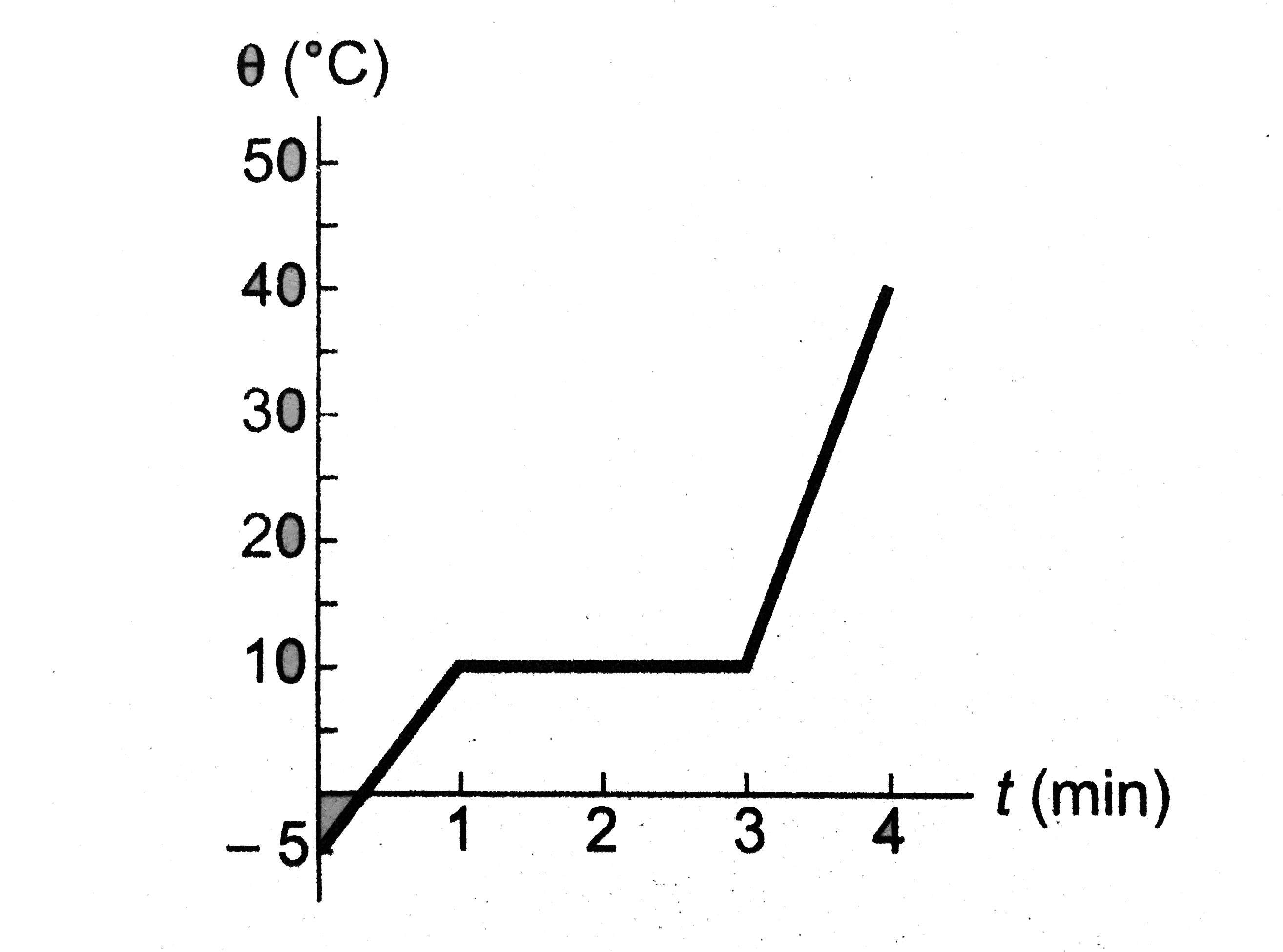A solid at temperature T1 is kept in an evacuated chamber at temperature T2>T1 . The rate of increase of temperature of the body is proportional to
t42−t41
(t24+273)−(t41+273)
t2−t1
t22−t21
The correct Answer is:C
c) As we know that, the rate of cooling is
dthηdt=bA(θ−θ0)
where, bA=constant
⇒dthηdtα(θ−θ0)
Also −dTdtαT−T0
where, T=temperature and t=time
So, the rate of heat absorbed by cooled body is proportional to t2−t1.
Topper's Solved these Questions
- CALORIMETRY AND HEAT TRANSFERBook:DC PANDEY ENGLISHChapter:CALORIMETRY AND HEAT TRANSFERExercise:Match the columns
Explore 4 Videos
- CALORIMETRY & HEAT TRANSFERBook:DC PANDEY ENGLISHChapter:CALORIMETRY & HEAT TRANSFERExercise:Level 2 Subjective
Explore 14 Videos
- CENTRE OF MASSBook:DC PANDEY ENGLISHChapter:CENTRE OF MASSExercise:Medical entrances gallery
Explore 27 Videos
Similar Questions
Match the following columns, Column1Coloumn2a Specific heatp [MLT^(-3)K^(-1)]b Coefficient of thermal conductivityq [MT^(-3)K^(-4)]c Boltzmann constantr [L^(2)T^(-2)K^(-1)]d Stefan's constats [ML^(2)T^(-2)K^(-1)]
View SolutionAs a physicist, you put heat into a 500 g solid sample at the rate of 10.0kJ/min, while recording its temperature as a function of time. You plot your data and obtain the graph shown in figure.
 .
.
(a) What is the latent heat of fusion for this solid?
(b) What is the specific heat of solid state of the material?
View SolutionA rod of weight w is supported by two parallel knife edges A and B and is in equilibrium in a horizontal position. The knives are at a distance d from each other. The centre of mass of the rod is at distance x from A. The normal reaction on A is.. And on B is......
View SolutionA solid at temperature T1 is kept in an evacuated chamber at temperature T2>T1 . The rate of increase of temperature of the body is propertional to
View SolutionThe figure shows the variation of V with i at temperatures T_(1) and T_(2) . Then T_(1)-T_(2) is proportional to
View SolutionThe V - i graph for a conductor at temperature T_(1) and T_(2) are as shown in the figure. ( T_(2) - T_(1)) is proportional to
View SolutionThree Carnot engines operate in series between a heat source at a temperature T1 and a heat sink at temperature T4 (see figure). There are two other reservoirs at temperature T2andT3, as shown, with T1>T2>T3>T4. The three engines are equally efficient if :

View Solutionदो पिण्ड विभिन्न तापों T1 व T2 पर हैं । यदि उन्हें उष्मीय संपर्क में लाया जाये, तो आवश्यक नहीं वे औसत ताप (T1+T2)/2 पर स्थिर हों । क्यों?
View SolutionAs temperature increases , T1/2 will _______.
View SolutionIf K_(1) is equilibrium constant at temperature T_(1) and K_(2) is the equilibrium constant at temperature T_(2) , and if T_(2)gtT_(1) and reaction is endothermic then
View SolutionA solid whose temperature t_(1)^(0)C It has a zero temperature chamber whose temperature t_(2)""^(@)C(t_(2) gt gt t_(1)) Is placed in. The rate of heat absorption by the body will be proportional
View SolutionIf two bodies at different temperatures T1 and T2 are brought in thermal contact, the mean temperature T1+T22. When
View SolutionA solid at temperature T1 is kept in an evacuated chamber at temperature T2>T1 . The rate of increase of temperature of the body is propertional to
View SolutionThree Carnot engines operate in series between a heat source at a temperature T1 and a heat sink at temperature T4 (see figure). There are two other reservoirs at temperature T2andT3, as shown, with T1>T2>T3>T4. The three engines are equally efficient if :

View SolutionA solid at temperature T1 is kept in an evacuated chamber at temperature T2>T1. The rate of increase of temperature of the body is proportional to
View SolutionThe V - i graph for a conductor at temperature T_(1) and T_(2) are as shown in the figure. ( T_(2) - T_(1)) is proportional to
View Solution
